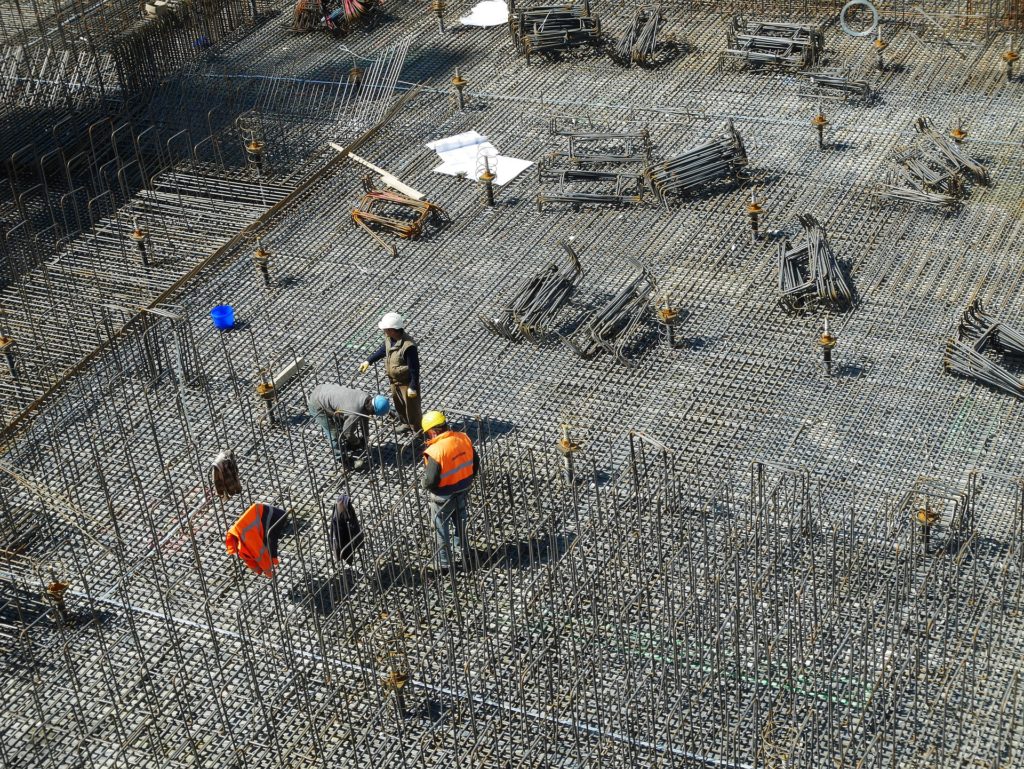After a Jobsite Accident, Filing a Report Is Mandatory—Learn What to Do Next to Protect Your Work Injury Case
Every day, there are approximately 6.5 million people working on 252,000 construction sites across the US. 1 in 10 of those workers will experience a jobsite accident this year.
Construction site injuries are all too common and many are preventable. If you or a loved one experienced injury in a construction site accident, you're likely entitled to compensation in some form. But how do you go about receiving that compensation?
Filing a jobsite accident report is critical to your case. There are a number of steps and follow-up actions that you should take in filing a construction accident report. Doing these correctly can make or break your case for compensation.
In this guide, we'll walk you through everything you should be doing for a powerful jobsite accident report following a construction site injury. Keep reading to find out how you go about making your case as strong as it can be.
The Fatal Four
Fatalities from construction site accidents are higher than the national average for all industries. That makes it one of the most dangerous jobs to have.
There are four common causes of serious injury and death on the construction site. The Occupational Health and Safety Administration refers to these as the Fatal Four. They include falls, being struck by an object, electrocutions, and being caught-in/between.
The majority of these accidents are preventable. And preventable injuries outside of these fatal four also occur regularly.
Some of the more common hazards that result in injury are the result of scaffolding, ladders and stairways, cranes, forklifts, improper hazard communication, and lack of personal protective equipment.
Many of these injuries occur as a result of negligence on the part of the employer to provide adequate training or to implement safety measures required under the law. Meaning that many accidents are not the fault of the victim.
Your Rights as an Employee
The Occupational Safety and Health Act of 1970 is the gold standard for employees rights. Under this Act, you are entitled to a safe workplace. The safety of the workplace is only partly your responsibility.
OHSA gives you the right to a safe workplace but it also obligates your employer to ensure that the workplace is safe for you to work. They are required to provide training and to perform regular tests and scheduled maintenance to ensure the safety of the construction site.
How to File a Jobsite Accident Report
There are a number of steps you should take immediately after an accident to strengthen your jobsite accident report. There are also a number of items you need to do after filing a report to make sure you're covering all your bases.

Go to Your doctor
The first thing you should do after an accident is going to your doctor. Go to your doctor whether or not you have an immediate injury. Although some accidents will cause an injury that obviously needs to be treated, other injuries may not be visible but can cause serious long-term damage.
For example, you may have sustained a concussion that doesn't exhibit symptoms right away. Headaches caused by a concussion or brain injury may not begin until days after the accident. Give your doctor the opportunity to recognize any potential for delayed-symptom injuries well in advance of the worsening.
Delayed-symptom injuries can make your condition worse in the long-term. That makes it more difficult for them to be treated. If you experience any dizziness, nausea, aches, pains or headaches days or even weeks after the accident, seek medical attention right away.
Notify Your Employer of the Event
Your accident might be covered by workers compensation. The time you have to file a workers compensation claim varies from state to state. In Illinois, you have 45 days to notify your employer that you got hurt at work if they do not already know. You have 3 years to open a case by filing a Workers Comp case at the Illinois Workers Comp Commission.
In a serious jobsite accident, the notice requirement is pretty much taken care of. Because if you have a serious injury witnessed by everyone, they cannot claim they didn't know it happened.
If your employer doesn't have a claim form, you can go to Illinois' Workers Comp website and get the notice form here.
Don't delay this step or you risk losing the opportunity to receive compensation for your injury. You may be unable to work for a period of time following the injury and you want to make sure that lost wages don't effect your recovery.
File a report right away, especially if you weren't immediately injured. Update your report in the case your injury begins showing symptoms later.
In your report, provide as much detail as you can. If your employer has written your report, review it for accuracy. If anything has been misrepresented, ask your employer to make the appropriate changes.
Once the report is finished, request a copy for your own records. Same with filing the case at the Commission. If you miss the 3 year deadline, your case could be over.
This is why a lot of injured workers hire a Workers Comp or construction accident attorney. They do not want to deal with the paperwork and the deadlines themselves.
Ensure Your Employer Has Filed the Right Report With OHSA
Employers are required to log and track workplace injuries on the jobsite. When an accident happens, they use an OHSA 300 Log to record the employee name, injury date, location, and injury type.
The 300 Log feeds into the 300A log, which tracks all the injuries and illnesses on a given construction site. These should be kept on the site and posted at all times to comply with OHSA regulations.
An OHSA 301 is another requirement whenever there is an injury or illness. This report details where the employee was treated, how the injury occurred, what the employee was doing at the time of the injury, as well as the length of time the employee has been employed with the company.
Ensure that your injury was logged and the information provided was detailed and accurate. Ask your employer to update any incorrect information.
Photograph the Evidence
If you're able, you should photograph the scene of the injury for undeniable, photographic evidence of what happened.
Take pictures of the surrounding area and the equipment that you were using. This could help you explain how and why the accident wasn't your fault.
Take pictures of your injuries as well. You can also photograph the clothing you were wearing when the accident occurred. In fact, it is recommended that you don't wash or fix that clothing so it can be used as evidence if needed.
Be careful, though. Don't walk around a work site after a jobsite accident with a camera taking pictures, because your employer isn't going to be happy about it. A photo or two is good, but don't gete into trouble, let your lawyer get photos.
Check the surrounding area for security cameras. If there are security cameras in the vicinity, they may have caught the event on tape. This can provide valuable evidence of how the accident happened.
Find Witnesses
If any other workers witnessed your accident, you should take down their names and contact information. Your lawyer can also get these names from the various companies who were present at the time of the jobsite accident.
It's important that you don't take any statements from these witnesses. Discussing the details of the event with potential witnesses may work against you. All you need is their contact information in case a statement is required later.
Keep a Journal
You should begin keeping a journal of everything related to your accident. The journal should include:
- A detailed daily log of your symptoms. Include information about how your injury is affecting your life, your ability to work, and how long it takes to do everyday things. Include anything related to emotional well-being as well as physical symptoms.
- Take photos of your injury every day so you have a visual journal or your recovery process.
- Write down all the details of any doctors visits. Including dates and what was discussed.
- Write down any discussions that you've had with others about the event. Again, include dates, names, and details of the conversation.
- Write down all the details of the accident immediately following the accident.
- Keep track of everybody involved in your report and your claim. This includes any managers, supervisors, and caseworkers. Write down the dates and details of the conversations.
Keep Copies of Everything
Keep copies of any and all forms you have to fill out. If you receive anything in the mail, keep copies of the envelopes and the postmarks.
Make sure you have copies of all medical records. Keep copies of receipts for any medical expenses incurred including prescriptions or physical rehabilitation.
Keep a copy of your claim form and your accident report to your employer.
Retain your pay stubs and/or paychecks as well as time sheets. Ensure you have stubs/checks and timesheets from before your accident occurred as well. This can help determine how your injury has affected your ability to work and make the same income.
Since a jobsite accident can often result in a Workers Comp case as well as a Construction Accident case, it is better to have more documents and evidence than less. And any lawyer you talk to should screen the injury case for both means of getting you fully compensated for your injuries.
Protect Your Rights After a Jobsite Accident—Take the Right Steps
Experiencing a jobsite accident can be overwhelming, but knowing how to report it properly is crucial for protecting your rights and securing the compensation you deserve.
At The Law Office of Scott D. De Salvo, we’re dedicated to helping injured workers navigate the complexities of a work injury case, from filing the initial report to building a strong claim.
In addition to jobsite injuries, we also handle slip and fall accidents, dog bite cases, and motorcycle accidents.
Contact us today for a free consultation, and let us guide you through the process of securing the justice and support you need.
Injured on the Job? Let Us Help You Take the Next Steps
Filing a jobsite accident report is just the beginning of securing the compensation you deserve. At the Law Office of Scott D. DeSalvo, we specialize in helping workers injured in construction accidents, workplace injuries, and jobsite accidents navigate the complex legal process.
From ensuring your workers comp claim is filed correctly to gathering evidence and negotiating with insurance companies, we’re here to protect your rights every step of the way. Don’t let missed deadlines or incomplete reports jeopardize your case.
Contact us for a free consultation and let us help you secure the justice and compensation you deserve!
Were You Injured on the Jobsite?
Here's how my free consult works:
- Free, 100% and call night or day.
- You tell me what happened.
- I answer your questions.
- I tell you my plan.
- You can deciude to hire me or not hire me, whatever you want to do.
- Either way, we end up friends.
Sound good?



